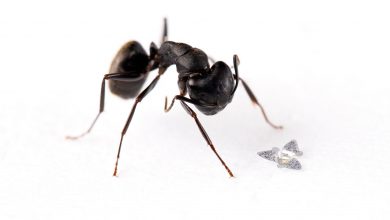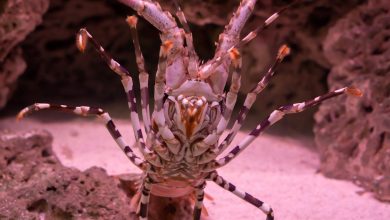Latest Articles
-
Sep- 2021 -26 SeptemberSpace

Untangling the Formation of Planetary Systems With Heavy Hydrogen
Lead image: ALMA images of the protoplanetary disks around young stars AS 209 and HD 163296. Different molecules have different distributions. Credit: ALMA (ESO/NAOJ/NRAO), Cataldi et al./Aikawa et al. An international research team using the Atacama Large Millimeter/submillimeter Array (ALMA) revealed the distribution of heavy hydrogen, or deuterium, in planet formation sites with the highest resolution ever achieved. This provides clues to understand the physical and chemical conditions during the formation of exoplanets and Solar System objects. “The various bodies in our Solar System have a variety of chemical compositions,” says Yuri Aikawa, a professor at the University of Tokyo.…
Read More » -
26 SeptemberScience

In a Gene Tied to Growth, Scientists See Glimmers of Human History
A paper in Science Advances focuses on the evolution of the human growth hormone receptor gene. A new study delves into the evolution and function of the human growth hormone receptor gene, and asks what forces in humanity’s past may have driven changes to this vital piece of DNA. The research shows, through multiple avenues, that a shortened version of the gene — a variant known as GHRd3 — may help people survive in situations where resources are scarce or unpredictable. Findings were published on September 24, 2021, in Science Advances. Here’s the story the study tells: GHRd3 emerged about…
Read More » -
25 SeptemberJet Planes

New Engine Design Could Muffle Roar of Fighter Jets – U.S. Navy To Test on F-18 Super Hornets
Lab tests show promise for reducing jet noise in commercial and military aviation. Aerospace engineers at the University of Cincinnati and the Naval Research Laboratory have come up with a new nozzle design for F-18 fighter planes they hope will dampen the deafening roar of the engines without hindering performance. Distinguished professor Ephraim Gutmark, an Ohio Eminent Scholar, and his students in UC’s College of Engineering and Applied Science designed and tested the new nozzles on 1/28th-scale jet engines in his aeroacoustics lab. The interior of the nozzles features triangular fins like rows of shark teeth that significantly reduced jet…
Read More » -
25 SeptemberScience-Tech

Winged Microchip Is Smallest-Ever Human-Made Flying Structure – The Size of a Grain of Sand
Lead image: A 3D microflier sits next to a common house ant to show scale. Credit: Northwestern University The size of a grain of sand, dispersed microfliers could monitor air pollution, airborne disease, and environmental contamination. Northwestern University engineers have added a new capability to electronic microchips: flight. About the size of a grain of sand, the new flying microchip (or “microflier”) does not have a motor or engine. Instead, it catches flight on the wind — much like a maple tree’s propeller seed — and spins like a helicopter through the air toward the ground. By studying maple trees…
Read More » -
25 SeptemberScience

Blueprint for Robust Artificial Tissues: Synthetic Hydrogel Mimics Lobster Underbelly’s Stretch and Strength
Lead image: An MIT team has fabricated a hydrogel-based material that mimics the structure of the lobster’s underbelly, the toughest known hydrogel found in nature. The membrane’s structure could provide a blueprint for robust artificial tissues. A lobster’s underbelly is lined with a thin, translucent membrane that is both stretchy and surprisingly tough. This marine under-armor, as MIT engineers reported in 2019, is made from the toughest known hydrogel in nature, which also happens to be highly flexible. This combination of strength and stretch helps shield a lobster as it scrabbles across the seafloor, while also allowing it to flex…
Read More »










